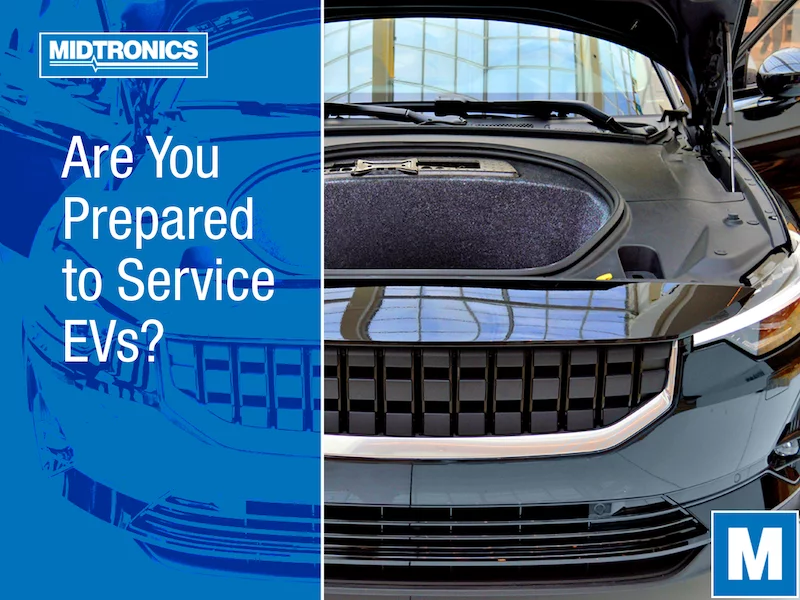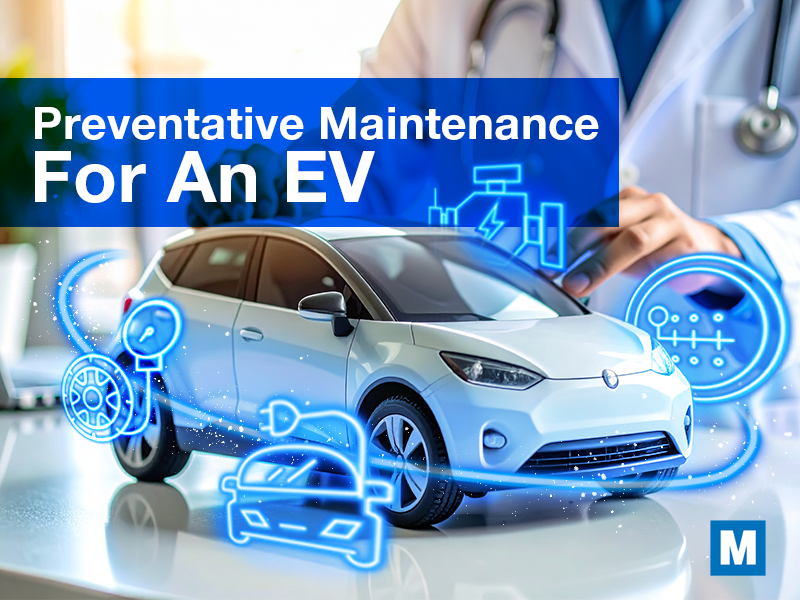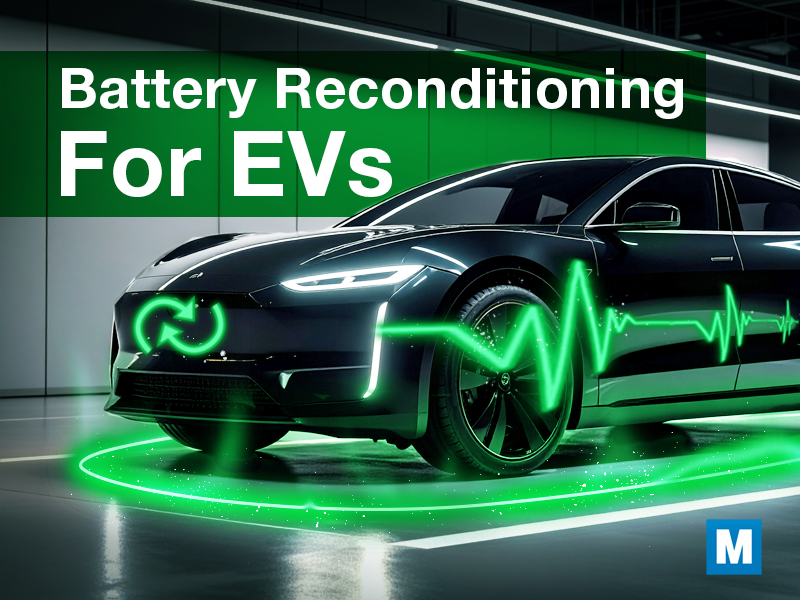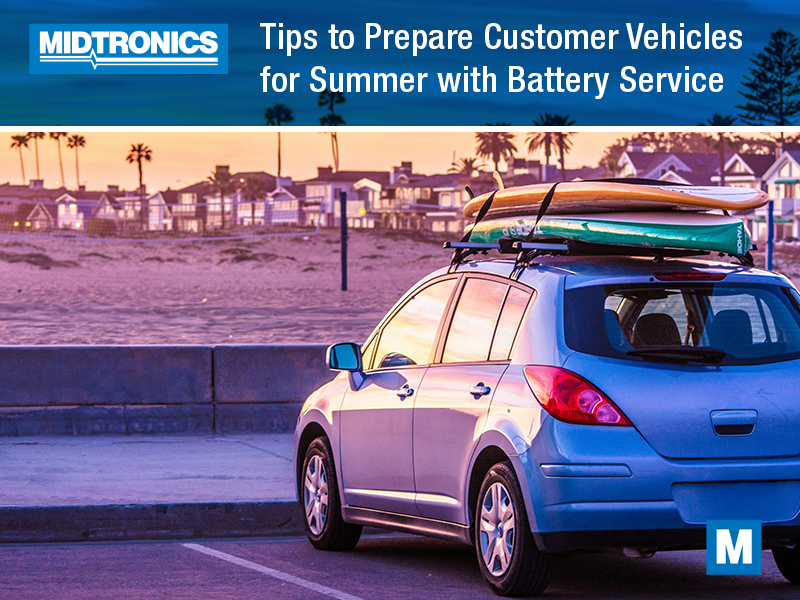By 2030, the number of electric vehicles sold in the US is expected to be nearly on par with internal combustion engine vehicles. More choices, longer ranges, and amazing technology will be available, but the current generation of EVs is going to need servicing well before then. While these electric vehicles require less maintenance and repair than ICE vehicles, there will certainly need to be some servicing performed in time.
Franchised dealers and independent service centers alike will be leaned upon to keep the electric fleet ‘running’, and these shops need to be trained and equipped to perform the steps required. Rather than oil and filter changes, fluid flushes, and powertrain repairs, EV services are more technical and demand a skill set that many techs don’t currently possess.
As the market moves forward with electrification, vehicle service centers need to get ready to perform these processes.
Module Balancing
Battery packs are often the costliest component on an EV, and it’s simply not financially feasible to replace a complete pack. It’s the equivalent of rebuilding an ICE engine to replace one spark plug. Instead, manufacturers typically assemble EV batteries in modules that can be replaced when they’re identified as faulty rather than the whole assembly.
However, a mismatch in the state of charge between a new module and the rest of the pack can lead to serious issues in performance and longevity. Module balancing needs to be performed at the time a module is changed, requiring specialized equipment to do so.
Pack Discharge
Perhaps the most important service that collision repair shops will be required to perform is discharging the battery pack. When there’s potential for energy leakage due to battery damage, or if the vehicle needs to be disassembled to repair either the battery or the structure, the battery pack must be discharged, obviously to prevent accidents.
This process may be one that’s done by the widest variety of users. Pack discharge could be required in a service shop prior to removing a battery pack for servicing, a collision shop, a tow truck before loading the vehicle onto a flatbed, or by technicians at a refurbishment shop before shipping.
Pack Service Verification
A service technician commonly road tests a vehicle after repair or performs a number of duty cycles to ensure a fault is corrected on an ICE vehicle. For EVs, it’s paramount that the service repair is done correctly and fully operational before attempting to operate the high-voltage vehicle. To do so, a pack service verification is completed that ensures it’s safe to use the vehicle.
This process is often specific to the OEMs and performed by dealers, although equipment and tools are often available for independent repair shops to do the same work.
Hybrid Rescue Charge
Unlike traditional ICE vehicles, hybrid electric vehicles don’t have normal jump-start points under the hood. If the high-voltage battery pack runs out of energy, it might require a costly and time-consuming tow to a service station.
A rescue charge can be applied to the high-voltage battery, adding enough power to allow the hybrid powertrain to function independently. This service is crucial for EV service centers to be familiar with since it’s unlikely that a roadside service will be able to help the driver.
Pack Charging
Most vehicle service centers that service EVs, or plan to, are equipped with Level 2 wall chargers to plug in the vehicle. However, shops also need to be equipped to charge a battery when it’s not yet installed. The battery pack itself isn’t equipped with an SAE J1772 connector, so shops need the equipment to charge fully assembled battery packs using alternate equipment.
Safe Storage
It’s unlikely that repair shops will carry an inventory of complete battery packs on the shelf, but it’s plausible and convenient for them to have a selection of individual modules they commonly use. However, these repair parts should be kept at a charge level that prevents issues like degradation before they’re ever installed.
EV service shops will need to have appropriate testing and charging equipment on hand to tackle the job for any modules they stock.
Routine Maintenance
Along with battery servicing, service facilities that work on electric cars will need to be capable of some more routine items. They can include:
- Diagnostics for EV systems as well as body and safety systems found in the vehicle. This requires professional computerized equipment and is likely to be a significant investment for the shop. Barring adoption for a diagnostic standard, there may be multiple systems required to work on a range of makes.
- Fluid changes. Although the powertrain is all-electric, there are often cooling systems still in operation. As well, the braking system will still contain fluid that needs to be exchanged due to time, mileage, or condition.
- Tire repairs and replacement. Every vehicle has tires that wear as they’re used, but EVs are commonly equipped with tires that feature low rolling resistance or a tread pattern that reduces the tire noise that’s usually covered up by engine noise. They’re also heavier since they need to support vehicle weights that exceed similar-sized ICE vehicles.
- Brakes and suspension work. Chassis and brake parts still exist in EVs, and they drive the same roads as ICE vehicles. They will wear in the same way, although typically at a slower rate with systems like regenerative braking in play.
Automotive repair shops will have a different purpose and look in a few short years. To be successful in retaining service business will require an investment in EV-specific equipment, and training on how to safely use it.




